Sound designer Jun Mizumachi of New York City's Tonic tries to create new sounds every day. "The most important part of my job is preparation," he says. "I record all the time - natural sounds, synthesized sounds - so as projects come in, I can instantly start to use my custom sounds. I categorize the new sounds in my hard disk; it's hard to classify abstract sounds but I try to be a good librarian."
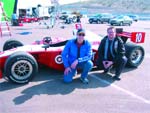
Modern Music's Jess Ford and Rick Meyer (L-R) recently went on location for a couple of Target Race spots. They were able to capture "really clean" engine revs.
|
Mizumachi called upon some of his custom-recorded sounds for two new HBO IDs whose 10-, five- and three-second versions appear between the cablenet's featured movies. Blocks depicts an array of skyscraper-like, red and white concrete blocks that drop into place to form the HBO logo, then rebound and come apart. Satin shows a 3D HBO logo swathed with soft cloth, Christo-style; as the logo rotates to the horizontal it becomes two-dimensional and vanishes with the disappearing cloth.
"Satin is sensuous, mysterious and tender with light coming from behind the fabric," Mizumachi says. "Blocks is monumental with big, hard objects. HBO wanted to use the same [musical] theme for both. I had to make both IDs the same in musical texture while doing the sound design according to the picture."
In both IDs Mizumachi used sounds originating from a shortwave radio. "I was interested in what was between the stations, where one sound disappears as a new one starts coming in. They fuse and it's very dynamic with lots of textures. I often record those sounds between stations and the next day put them in the Synclavier or digital signal processors so I can clean them up and extract and emphasize one part of the frequency."
In the MIDI room he shares with Peter Fish, principal/composer at Tonic (www.tonic.tv), Mizumachi combined air, blowing wind and a breathy flute with high-frequency sound made by granular synthesis for an organic, light whoosh sound evocative of the smooth, soft movement of the Satin cloth, which changes texture as the light behind it changes color.
For Blocks, he created a number of reverse percussive sounds without hits for the descending blocks, then used a puffy air sound for the blocks' soft landing and more high-frequency sound made by granular synthesis for the blocks' landing debris.
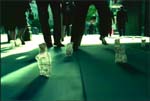
Marshall Grupp designed the sound of money for this ING spot, which features animation by UK-based Lola.
|
One of the biggest challenges is the extremely short duration of IDs. Ten seconds goes by fast enough, but how does a sound designer define a network in just five or even three seconds? "You have to compress the melodies and summarize the essence of the sound design with the longest note or by taking the top and the bottom," Mizumachi explains. "You might just lift out a middle chord for three seconds. But the final decisions are made by the ears: Do they say it feels the same as the 10-second ID? You have to maintain that same overall feeling."
The HBO IDs were mixed at Tonic by Jody Nazzaro using Pro Tools, a Euphonix System 5 digital console and a TC Electronic 6000.
MODERN REVS ENGINE FOR TARGET
Authenticity drove Rick Meyer's sound design for a pair of Target Race TV commercials - Freeze Frame for Fuji Film and Power Outage for Energizer Batteries - which thank the subsponsors of Target Stores' Indy racing team.
Meyer, creative director at Modern Music (www.modern-music.com), a division of Fischer Edit in Minneapolis, told the Fame agency in town that he'd love to get location audio to integrate with a heavy techno track by colleague Daron Walker, who wrote the music with space to add sound effects.
Meyer got the greenlight and headed with producer Jess Ford to Phoenix International Raceway in Arizona. They recorded in stereo with a Shure stereo mic, which "does a great job with high-pressure levels," and an HHB mini disk recorder. "We captured very specific sounds from take offs from the pits to high-speed fly-bys," says Meyer.
As racing fans who could "speak the Target team's lingo," Meyer and Ford established an immediate rapport with them and could dictate some of the custom sounds they sought, such as "really clean engine revs and thumping throttles when the cars come into the pits," Meyer says. "We could truly get inside the cars."
Back at Modern Music, Meyer took four hours of location audio into a Pro Tools TDM Mix 3 Plus system with ProControl and manipulated it in Sonic Foundry's Acid software and a Roland MC-909 sampling machine.
"I had half a dozen Waves plug-ins on Pro Tools, like Enigma and Doppler, and went to town with them," says Meyer.
In Power Outage, Energizer batteries come to the rescue of the guys who use laptops to measure the cars' telemetry. Meyer didn't create a classic winding-down sound when the power fails but crafted a "surreal sound with weird undulating static" by bringing in a Korg Karma keyboard, "low-fying it, forcing it back into high fidelity again and throwing all kinds of things at it."
He worked closely with Fischer Edit editor Brett Astor and Flame artist Mark Youngren on the spots. For a sequence where a car zooms off from the pit, Meyer devised "big, spinning stereo effects" to accompany the colorful, striped graphic the car leaves in its wake. "It's a difference of night and day between generic racing sounds we've pulled from libraries before and the unique sounds we captured, especially since the cars changed engines this year," Meyer says, adding, "The location audio will be part of our custom library now."
SOUNDS OF THE SEA
Sound design is an often misunderstood art form, something that may take place late in post production when clients are looking for quick solutions. But sound design is more than pulling clips from a CD library: it's an entire creative process. That's why Marshall Grupp advises clients to get sound designers involved in projects at an early stage. "You use the best directors, the best editors, so why not the best sound designers?" he asks.
Grupp heads Marshall Grupp Sound Design & Music, a division of NYC's Sound Lounge (www.soundlounge.com) where Grupp is a partner. A recent :60 anthem-style US Coast Guard recruiting spot gave him ample opportunity to demonstrate his sound design chops with its dramatic depiction of ships, helicopters, water rescues and storms.

Newell of Ripe Sound helped give the latest "Got Milk?" campaign a new sound.
|
"I come from a feature background, so it was fun," says Grupp who did some of the work in his sound design room equipped with a Synclavier, Pro Tools and a personal library of approximately 40,000 sounds. He created a thunderstorm-at-sea sequence by layering lightning, rain and waves pounding on a boat and sweetened thunder bolts with low-end hits and rumbles. Real helicopter noise was enhanced with an animal sound "to make it fatter and more interesting," he reveals.
Grupp also spent considerable time doing Foley at C5's facility in Northvale, NJ, creating the sounds of men running across metal boat decks, people falling in the water and a helicopter shooting out a thick wire for rescues.
"I built my track listening to the temp music track and the individual lines of copy. There wasn't a lot of copy so viewers could have a real cinematic experience," Grupp explains. Although the temp track used music for the final logo hit, where the Coast Guard shield comes up, it was replaced by a metallic hit Grupp devised.
Grupp was back at C5 to Foley a particularly challenging sound - money - for an ING spot in which hyperactive 3D-animated currency escapes from a bank and heads through the streets of New York to a car dealership. "We had about 16 Foley tracks of money, both groups of money and individual bills. It flies out of a drawer in the bank vault, runs and sidesteps people on the street. One bill falls and slides across a hall. We used paper sounds where the money rustles in the last shot, but when it runs and moves we made a more high-end metallic sound that would come through the music track better."
Marco Costanzo performed the group and individual money performances, using metallic objects on surfaces simulating the bank lobby's marble floor and the sidewalk's cement. George Lara engineered the session and edited the Foley. "When you do group Foley it can become mushy, so Tom Jucarone at Sound Lounge mixed each character separately for a sense of dimension," Grupp explains. Traffic sounds and a fire engine siren were added to give the impression the animated currency was proceeding through the city.
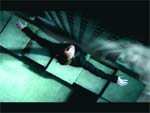
Post house Creative Bubble, and its audio division Burst in NYC recently created a musically-driven promotion for the third season of HBO's Six Feet Under. Burst senior mixer/founder Marcelo Gandola edited instrumental and album versions of Coldplay's "Rush of Blood to the Head" to fit the format of the spot, which has :30, :60 and :90 versions, the longest of which appeared on the HBO Web site.
|
RIPE HELPS TREE HUGGER
Goodby, Silverstein & Partners' long-running and highly successful "Got Milk?" TV campaign has a new look and a new sound. Andy Newell, lead composer/sound designer at San Francisco's Ripe Sound (www.ripesound. com), devised some innovative audio treatments for a spot in the new "Strength Comes From Within" campaign, which takes a different approach from the milk-deprivation gags of the previous commercials.
In Breakaway people are walking backwards in slow motion on a busy city street. One woman is struggling against the tide of reversed motion, grabbing onto a newspaper vending machine trying to gain forward momentum. Sound builds, creating tension that reflects the inner turmoil she feels. Finally she clings to the protective grate around a tree as the sound climaxes. When she releases the tree she is able to move forward on her own while everyone else stares, amazed, and continues to walk backwards.

Sound designer Frank Serafine helps Yamaha develop synth
|
Newell created "highly-structured loudness, not noise" that contained a host of components including a tea kettle, engines, jets winding up and new found sounds that he plucked from sources such as movies in the public domain and old 78rpm records. One of the agency creatives brought in several tracks he wanted to incorporate: humming and obscure voices from 1930s music, which "sounded very radio" to Newell. These elements supplied the thread for the odd vibration in the beginning of the spot.
"From the [radio-style] static I heard in the rough, it was clear to me we were tuning in on different dimensions and time periods," he says. "There's maybe 20 seconds of tuning this dial of time with a constant hum. As the woman struggles, we hear the jets wind up sound; a pilot in distress; saws on nails mixed with a harp that's been processed, looped and reversed; church bells. It's more than cacophony - it's a very complex, intense structure because the sounds are at variance with each other."
Newell used his arsenal of sound generating equipment, including Spectrosonics' Atmospheres module for his Pro Tools|24 Mix. "I did as much processing as I could to create a transmission that sounded like it came from some other place," he emphasizes.
When the woman releases the tree and starts moving forward, Newell added a big gust of processed wind, which carries the spot out to the Strength Comes From Within graphic and Got Milk? tag.
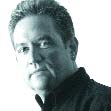
Hothead's John Terelle took away "some of the recorded ambiance" from this safe sex PSA featuring two gay men buying condoms at a market.
|
"It's real wind that I processed with Wave Mechanics' Ultra Tools plug-in and MetaSynth from U&I Software that works outside Pro Tools," he explains.
Another Got Milk? spot, Damian, which reprises the milk-deprivation theme, follows a psychic child to a birthday party. It features a layered sound bed with a multitude of tracks - including raindrops, location car sounds and a Foley'd falling tree - to make what was shot MOS come to life. "It's the little things - the things that go unnoticed by most listeners - that bring you there and make it believable," Newell points out.
HOTHEAD's SAFE SEX
John Terelle and Jim Stauffer, co-owners of NYC's Hothead (www.hothead.tv) with Laki Fotopoulos, have been the sound designers of record for MTV promos since the network's launch.
Terelle recently provided sound design for Easier Said and Done, a package of three safe sex PSAs for MTV produced by Ted Pauley. One depicts a couple in a drugstore where it's the man's turn to buy the condoms. But he's acting out and trying to embarrass his partner who finally grabs the counter microphone and announces that he'd better behave or he's not getting any sex tonight. The PSA had only dialogue, no ambiance so Terelle added footsteps, reverbed and filtered background music and fed the woman's voice through a Pro Tools distortion unit and filter to produce a tinny loudspeaker-like sound. He also used Pro Tools' automated reverb, D-Verb, to create a space that sounded like a drugstore and changed from person to person.
By contrast, Terelle "wanted to take away some of the recorded ambiance" in a supermarket spot featuring two gay men. "I wanted to put both men in one space and keep them there from shot to shot," he explains. As one man recites euphemisms for condom use, a butcher plops sausages onto brown paper. Terelle and producer Pauley Foley'd the scene by slapping wet paper towels onto newspaper and recording the results with a Neumann M149 tube mic.
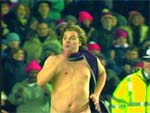
Sound designer Jay Nierenberg of NYC's Elias Arts created crowd and environmental effects for Nike's humorous Streaker spot in which a crazed, and naked, fan storms a soccer field and, to the crowd's delight, eludes police. Nierenberg used a Marantz PMD690 recorder and a pair of Schoeps CCM4 mics for location recording. The track was put together using his Digidesign Pro Tools|HD system. The spot airs through the summer.
|
Stauffer got a chance to play with sound in promos, IDs and educational interstitial games for the re-launch of Nickelodeon's Noggin channel for preschoolers. In an iso booth he Foley'd a lot of sounds for the animated Moose A. Moose and Z bird characters using coats to muffle Moose's hoofsteps and his mouth to make Z's footsteps sound like "squeaky fine Italian shoes. Most kids grow out of making sounds like this," Stauffer notes. "I'm lucky I found an avenue for it!"
He shook a marimba in time with Z's eyeblinks and played a glockenspiel, bells and slide whistles for zany sounds accompanying hide-and-seek games. Stauffer often coaxes his clients to play the instruments, too.
To cue kids watching the games, he recorded the reactions - giggles, ad libs, play talk - of a small group of children in the studio with Earthworks QTC1 omni mics, very wide open. Using Pro Tools he stacked them to make the group sound larger and laid them over Hothead composer Roy Harter's music track featuring fun instruments like ukuleles with pots and pans for the percussion bed.
TOPPLING SADDAM, COFFEE
Sound designers Dave Howe and Mike McAuliffe, who are partnered with Tom McGurk and Charlie Nordstrom in Seattle's Bad Animals (www.badanimals.com), created sound design for a national Mercy Corps PSA ripped from today's headlines. The spot, for an organization that provides aid to Iraqis, features heavily-processed, filtered, layered, moving images, including people's faces and Saddam Hussein's toppled statue.
They grabbed viewers' attention at the top of the message with thunderous crackles combined with airy whooshes that wash across shots of an old man and his son walking in the rubble. "The PSA starts with a graphic flash and images of the aftermath of Saddam's reign, which we wanted to make a bit more intense," McAuliffe explains. "Then once Saddam's statue falls, we go to a quiet wind with music in the background."
McAuliffe selected the music bed which "cut through and softened the picture." The solo woman's world music/ethnic vocalizations "created an emotional quality that worked for the spot," says Howe.
Howe and McAuliffe lowered the pitch of stock thunder to get a rumbly, edgy sound that simulates the unseen battlefield and added reverb to a fishing pole waved in front of a mic for the whooshes. They processed, slowed and lowered the pitch of stock wind to create a deep, cool, airy bottom end and added falling bricks they'd Foley'd to a stock tree fall to lend a rub, grind and crackle to Saddam's falling statue.
"We're big on not using stock sound effects," says Howe, "but when we do take sounds off CDs we blend and change them so they're not recognizable as stock." Bad Animals has its own Foley room with Pro Tools and Avid AudioVision systems. For the PSA the partners used Pro Tools Mix Plus 5.1.3 and its Time Blender feature as well as a full complement of plug-ins. They also have an array of outboard gear, including Lexicon reverb and Eventide harmonizers. TC Electronic Finalizer tightened the audio for the final mix, which was done with a Yamaha 02R console.
Howe and McAuliffe found quite a different challenge in 10 diverse five-minute Fly Films for the Seattle International Film Festival; Bad Animals has provided sound design for these short films for the past three years.
The filmmakers, who built their shorts around words - icons, music, trees, water, coffee - they pulled from a hat, took both literal and abstract approaches to sound design. "The Coffee film was documentary-style so we did more Foley to make it more real," McAuliffe says. "They couldn't grab any coffee sounds in production because the machines were so loud so we took a bag of coffee beans and swirled, poured, threw and dropped them onto the floor."